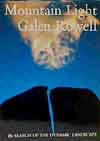Shutterbabe
Deborah Copaken Kogan
Random House, ISBN: 0375758682 Publisher, Buy online
 I picked up the hardcover edition of this book from the sale bin at Stacey’s Booksellers, as the Leica on the cover just beckoned to me.
I picked up the hardcover edition of this book from the sale bin at Stacey’s Booksellers, as the Leica on the cover just beckoned to me.
This is an autobiography by an American woman, almost a girl, who moved to Paris, fresh out of college, to break into the tightly-knit (and not a little macho) community of photojournalists. Who knows, I might even have crossed paths with her when I studied in Paris. She was certainly not the first female war correspondent, Margaret Bourke-White springs to mind (even though she is not referred to anywhere in the book), but women were still a rarity, specially one as young and inexperienced. She started as a freelancer and eventually ended up working for the Gamma agency, one of the few independent photo agencies left.
For some unknown reason, many of the prestigious photo press agencies are based in Paris, starting with Magnum, founded simultaneously in Paris and New York by Robert Capa (the man who took the only photographs of D-Day), Henri Cartier-Bresson, George Rodger and Chim Seymour. Others like Gamma, Sygma and Sipa followed, but most have been acquired since by large media conglomerates like Bill Gates’ Corbis. The move to digital, with the corresponding explosion in equipment costs is one reason – the independent agencies simply couldn’t compete with wire services like Reuters or Agence France Presse (AFP), the latter being government-subsidized. Saturation is probably another, and press photographers struggle to make a living in a world with no shortage of wannabes. Just read the Digital Journalist if you are not convinced.
Shutterbabe is not a mere feminist screed, however. Engagingly written, with very candid (sometimes too candid) descriptions of the sexual hijinks and penurious squalor behind her trade, this book is a pleasurable read and features a varied rogues’ gallery ranging from the cad (her first partner) to the tragically earnest (her classmate who is executed by Iraqi soldiers while covering Kurdish refugees). It only touches in passing on photographic technique, as the general public was clearly the intended audience, but more surprisingly, does not include that many of her photos either. The main thread reads like a coming of age story, with the young (25 year old at the time) woman moving on from her thrill-seeking ways and discovering true love and marriage in a life marked by death: deaths of friends and colleagues, victims of strife and war in Afghanistan or Russia, but also orphans dying of neglect in Romania.
A photojournalist is always in a rush to get to the next assignments, and she recognizes her involvement with her subjects’ culture as superficial, unlike that of her locally based correspondent colleagues or those who would nowadays be called photoethnographers. There is more humanity in a single frame by Karen Nakamura or Dorothea Lange than in all of Deborah Copaken’s work. Much like her idol Cartier-Bresson’s work, there is a certain glib coldness, perhaps even callousness to her attitude. On her first war coverage, an Afghan who is escorting her (so she can make her ablutions in privacy) has his leg blown off by a landmine, and she hardly elicits any concern for the poor soul. Granted, this is the “Shutterbabe”, not the reborn Mom. but it is hard to imagine one’s fundamental personality changing that much.
The author is not uncontroversial. She featured in a nasty spat with Jim Nachtwey, one of the most famous photographers alive, and who is obliquely referred to in Shutterbabe‘s Romanian chapter (where she implies she found out first about the terrible situation in the orphanages, and nobly tipped him so the story could come out). The follow-ups are here and here.
Her observations of the one culture she is immersed in, the French one, seldom go beyond the realm of cliché. Glamorous but feckless and chauvinistic Frenchmen! Sexpot Frenchwomen! Narcissistic French intellectuals!
In the end, she returns to the United States with her husband, and moves into an equally short-lived career in TV production to support her family. A happy ending? One hopes. I for one am curious about how her children will react to the book when they are old enough to read it.
 British theologian Karen Armstrong entered a convent at seventeen to become a Catholic nun. She defrocked in 1969 (this caused a great scandal among British Catholics, many have not forgiven her to this day). She has since become a student of the three great monotheistic religions, writing one bestseller on the subject,
British theologian Karen Armstrong entered a convent at seventeen to become a Catholic nun. She defrocked in 1969 (this caused a great scandal among British Catholics, many have not forgiven her to this day). She has since become a student of the three great monotheistic religions, writing one bestseller on the subject,  Galen Rowell was a world-class mountaineer and photographer. He
Galen Rowell was a world-class mountaineer and photographer. He